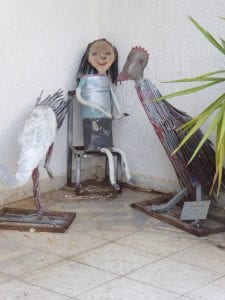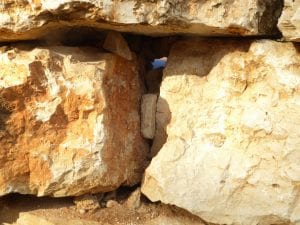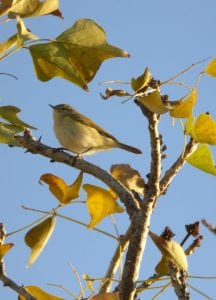
Figures by Yankol. Naomi’s Photos.
I was delighted to read Chia Suan Chong’s useful and inspiring post “Tidying my ELT mess with the KonMari Method™ .
“ELT mess”… the phrase resonates with me. My EFL classroom /learning center caters to Deaf and hard of hearing students at every possible level. In addition, I’ve been teaching for a long long time… As you can imagine, the classroom closet is PACKED! It’s not chaotic, I’m not ashamed to open its doors in front of visitors, but it is way too full to be useful! It is also harder to keep organized when it is so full.
Just like everyone else, I’ve encountered Marie Kondo’s tidying up method. My sock drawer says “thank you, Marie”! Yet I had no idea how to apply the method, even partially, in the classroom. If the basis of the method is “Sparking Joy” – how does that relate to classroom materials?
Not only does Chia Suan Chong present the reader with some practical advice on applying this organizational method specifically for ELT teachers, but the author also explains how to relate the term “spark joy” to ELT teaching materials.
So off I went to utilize some non-consecutive free periods and declutter that classroom closet”!

Naomi’s Photos
I ran into trouble pretty quickly.
Sigh.
For one thing, it seems you can’t skip stages.
Placing the stationery items back into their designated little plastic containers is not a problem to do during a free period. I do that from time to time anyway (staplers start migrating to the glue box, markers end up with the scissors, you know what I mean).
No problem. Well done!
But I can’t possibly take out all the books in the closet all at once and make a big pile. I need to teach in a classroom that doesn’t look like a big mess and I can’t deal with all the books in 45 minutes!
So, I decided to begin looking at the books on the top shelf on the right side of the closet, where I keep the books that I don’t use regularly. The plan was to start from left to right and to pull out the books that I can either give away or recycle. Then I would be able to work in small bites.
ALL THOSE BOOKS “SPARK JOY”!

Each and everyone might be just the book I might need for a certain student, who knows? I have proof, too! Just a month ago a passage from a book I hadn’t touched for at least 10 years had just the right type of short text with pictures that I needed for a student who had to get an individually tailored task.
I don’t want to part with a copy of the national curriculum from the 1980s, and I certainly don’t want to part with other books from the 1980s that had marvelous stories and passages in them. Every year I plan on creating wonderful activities with selected sections…. (I know, I know. The fact that it hasn’t happened yet is a bad sign). I have a slew of grammar books for many levels and age groups, with different kinds of explanations. Surely I need all of that, right? Then there are the “exam books”. The format of the matriculation (“Bagrut”) exams has changed many times yet it seems wise to keep the old books as some of the reading comprehension texts there could be very useful.
Did I mention that there are the new books coming in, and don’t forget the many binders full of worksheets…
And more…
Perhaps I had better wait till June to attempt this formidable task again!
What’s your strategy for dealing with the ELT classroom closet?






